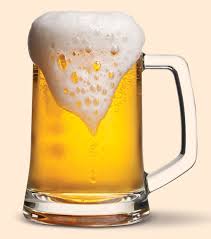
Which filter works best?
Special post by Niels Mastrup, Director of Filtration Technology
Filtration with diatomaceous earth (DE) is getting some bad press of late as being old-fashioned and environmentally-unfriendly. But is this really deserved? Absolutely not: DE filtration is more subtle than the purely mechanical process provided by crossflow microfiltration. DE works more like isinglass finings than filtration when one analyzes what is removed: Both eliminate haze-inducing species while leaving similarly-sized components in the beer that are responsible for foam retention, color, and mouth feel.
The problem with crossflow membranes and infections.
Although crossflow filtration costs are reducing, membrane life and cleaning complexity are still uncertainties that plague even the most well-established sectors where the technology has already taken hold. A good example is fruit juice filtration: Much of the world’s apple juice has been filtered on crossflow membranes since the 1980’s, and the industry has been fighting with alicyclobacillus infections ever since.
Crossflow filters have "green" issues. Spent cake from diatomaceous earth is recyclable.
The wine industry is a more recent adopter of crossflow filters and arguably has an easier time dealing with the infection risk of unsterilizable polymeric membranes - alcohol and the anaerobic conditions help - but the move to crossflow has been more inspired by a need to automate qualitative environmental arguments (“green image”) than a desire to reduce production costs. Trying to make a cost comparison between DE filtration and crossflow is like picking your way through a minefield: The only certainties are that some brewers have deliberately chosen crossflow even in the knowledge that it is not the most cost-effective filtration method, basing their decision largely on environmental concerns about filter powder handling and spent cake. At the same time, they play down the fact that the cleaning of a crossflow membrane needs more chemicals than those employed for a DE filter and that the membranes are composed of plastic parts that ultimately need disposing of.
In any case, with the movement of bottles and cans across continents from production to sale, “green image” arguments such as these pale into insignificance given today’s global nature of beer branding and sales. The packaging itself carries its own huge environmental burden: The CO2 footprint of any filtration step is dwarfed by such issues. The resurgence of local microbreweries is a healthy sign for the environment, but perhaps we should go the whole hog and back to a time when beverages (beer, wine, milk) were collected from the point of production by the consumers.
Don’t forget to bring your own growler! Seriously, I'd like to have me or one of our filtration experts at EP Minerals continue this discussion with you. Please visit: https://epminerals.com/products/celabrew.
